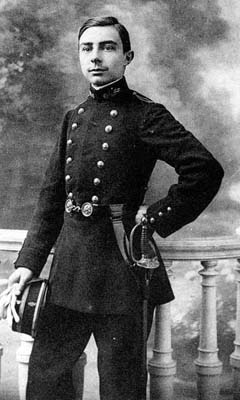

تاريخ الرياضيات

الاعداد و نظريتها

تاريخ التحليل

تار يخ الجبر

الهندسة و التبلوجي


الرياضيات في الحضارات المختلفة

العربية

اليونانية

البابلية

الصينية

المايا

المصرية

الهندية


الرياضيات المتقطعة

المنطق

اسس الرياضيات

فلسفة الرياضيات

مواضيع عامة في المنطق


الجبر

الجبر الخطي

الجبر المجرد

الجبر البولياني

مواضيع عامة في الجبر

الضبابية

نظرية المجموعات

نظرية الزمر

نظرية الحلقات والحقول

نظرية الاعداد

نظرية الفئات

حساب المتجهات

المتتاليات-المتسلسلات

المصفوفات و نظريتها

المثلثات


الهندسة

الهندسة المستوية

الهندسة غير المستوية

مواضيع عامة في الهندسة

التفاضل و التكامل


المعادلات التفاضلية و التكاملية

معادلات تفاضلية

معادلات تكاملية

مواضيع عامة في المعادلات


التحليل

التحليل العددي

التحليل العقدي

التحليل الدالي

مواضيع عامة في التحليل

التحليل الحقيقي

التبلوجيا

نظرية الالعاب

الاحتمالات و الاحصاء

نظرية التحكم

بحوث العمليات

نظرية الكم

الشفرات

الرياضيات التطبيقية

نظريات ومبرهنات


علماء الرياضيات

500AD

500-1499

1000to1499

1500to1599

1600to1649

1650to1699

1700to1749

1750to1779

1780to1799

1800to1819

1820to1829

1830to1839

1840to1849

1850to1859

1860to1864

1865to1869

1870to1874

1875to1879

1880to1884

1885to1889

1890to1894

1895to1899

1900to1904

1905to1909

1910to1914

1915to1919

1920to1924

1925to1929

1930to1939

1940to the present

علماء الرياضيات

الرياضيات في العلوم الاخرى

بحوث و اطاريح جامعية

هل تعلم

طرائق التدريس

الرياضيات العامة

نظرية البيان
Pierre Humbert
المؤلف:
P Costabel
المصدر:
Biography in Dictionary of Scientific Biography
الجزء والصفحة:
...
27-7-2017
557
Died: 17 November 1953 in Paris, France

Pierre Humbert was a son of Georges Humbert who also has a biography in this archive. Pierre's mother died when he was very young and he therefore never knew her. However, his father remarried when Pierre was about nine years old so he at least had a step-mother from this time.
All of Pierre Humbert's school education took place in Paris, and following this he went on to attend the École Polytechnique there entering the famous French university in 1910. After studying in Paris for three years he left for Scotland to undertake research at the University of Edinburgh.
At the University of Edinburgh Humbert undertook research under Whittaker whose philosophy of mathematics, and of science more generally, fitted in precisely with those of Humbert. His whole career would be influenced by the one year, 1913-14, which he spent in Edinburgh and in many of his publications Whittaker's influence can be seen.
Of course 1914 marks the beginning of World War I and Humbert, despite having rather poor health, joined the army. After receiving a wound Humbert was no longer fit enough to continue to take part in the military action and so he was able to continue his research. He submitted his doctoral thesis Sur les surfaces de Poincaré in 1918 and he received a doctorate in that year. Following this he was appointed to the Faculty of Science at Montpellier as professor of astronomy and, despite travelling widely in France and abroad, he essentially spent his entire teaching career at Montpellier.
Humbert's father Georges Humbert had gifts which extended beyond mathematics. This was even more true of his son Pierre Humbert who [1]:-
... demonstrated a highly refined sensitivity to culture, devoting attention to literature and music as well as to science. Moreover, he was unsatisfied with the simple juxtaposition of knowledge and religious faith.
Pierre, like his father, was a Roman Catholic and he mixed his religious beliefs with one of his other great loves, namely teaching, in his work for the Joseph Lotte Association which was an organisation for Catholic public school teachers.
Whittaker had instilled in him an aim which went far beyond mathematics or even science, for he aimed at developing the intellect. He had almost an ancient Greek attitude to scholarship and learning and indeed he did have a deep interest in history although it was in general more recent history than that of ancient Greece. Humbert married the daughter of the astronomer Henri Andoyer and this, certainly in part, increased his interest in the history of astronomy. He even wrote some articles on the history of mathematics and astronomy with his father-in-law. Specialising in the history of the seventeenth century he wrote particularly on the French astronomers of that period.
He also made contributions to mathematics, in particular he wrote on elliptic functions, Lamé functions, and Mathieu functions. His main mathematical work from the mid 1930s onwards was in developing the symbolic calculus. He also wrote on applications of the symbolic calculus to mathematical physics.
Humbert had a fine reputation as a lecturer and also was a talented organiser. He showed his organising skills in his involvement with the French Association for the Advancement of Science.
- P Costabel, Biography in Dictionary of Scientific Biography (New York 1970-1990).
http://www.encyclopedia.com/doc/1G2-2830902087.html
Articles:
- P Sergescu, Notice sur Pierre Humbert, Archives internationales d'histoire des sciences 7 (1954), 181-183.
 الاكثر قراءة في 1890to1894
الاكثر قراءة في 1890to1894
 اخر الاخبار
اخر الاخبار
اخبار العتبة العباسية المقدسة

الآخبار الصحية















 (نوافذ).. إصدار أدبي يوثق القصص الفائزة في مسابقة الإمام العسكري (عليه السلام)
(نوافذ).. إصدار أدبي يوثق القصص الفائزة في مسابقة الإمام العسكري (عليه السلام) قسم الشؤون الفكرية يصدر مجموعة قصصية بعنوان (قلوب بلا مأوى)
قسم الشؤون الفكرية يصدر مجموعة قصصية بعنوان (قلوب بلا مأوى) قسم الشؤون الفكرية يصدر مجموعة قصصية بعنوان (قلوب بلا مأوى)
قسم الشؤون الفكرية يصدر مجموعة قصصية بعنوان (قلوب بلا مأوى)

















